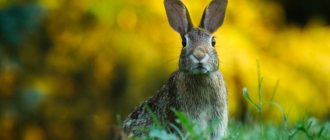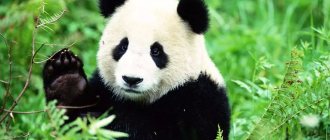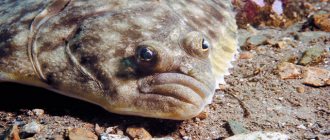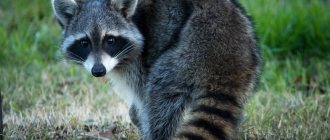Amphipod is a representative of the crustacean class. It is also called freshwater shrimp and sea flea. He is very fast and agile.
When going on vacation, you can often find amphipods near the seashore and in the coastal zone. They inhabit sea sand in huge quantities. Large colonies can settle in discarded seaweed along the beach line.
There are many types of crustaceans, some of them carry a number of infectious diseases and can cause allergic reactions.
Amphipods are distributed everywhere, in fresh and sea water. The number of species includes more than 8,000 varieties. There are a small number of parasitic forms called whale lice. Among the representatives of the species there are predatory individuals, such as the sea goat. It settles in a grassy thicket and tracks prey from behind, hunts with the help of its front claw, and when it encounters prey, it attacks it.
It is of great economic importance, both in fisheries and poultry farming. It is a protein supplement for feeding birds and fish.
They are especially important for commercial fish, as they form the basis of their diet. Bream, flounder, trout, and omul eat it. With the help of artificial breeding in the reservoir, amphipods serve as food for fish.
Origin of the species and description
Photo: Yak
Fossil remains of the domestic yak and its wild ancestor date back to the Pleistocene period. Over the past 10,000 years, the yak has evolved on the Qinghai-Tibet Plateau, which extends over approximately 2.5 million km². Although Tibet remains the center of yak distribution, domesticated yaks already live in many countries, including the American continent.
Video: Yak
Yak is usually classified as cattle. Still, mitochondrial DNA analysis to determine the evolutionary history of yaks has been inconclusive. The yak may be different from cattle, and there are suggestions that it is more similar to the bison than to other members of its assigned genus.
This is interesting! A close fossil relative of the species, Bos baikalensis, was discovered in eastern Russia, suggesting a possible route by which the yak-like ancestors of the current American bison may have entered the Americas.
The wild yak was tamed and domesticated by the ancient Qiang people. Chinese documents from ancient times (eighth century BC) attest to the long-established role of the yak in the culture and life of the people. The wild yak was originally designated by Linnaeus in 1766 as Bos grunniens ("a subspecies of the domestic yak"), but this name is now thought to apply only to the domesticated form, with Bos mutus ("dumb ox") being the preferred name for the wild forms
While some zoologists continue to consider the wild yak to be a subspecies of Bos grunniens mutus, in 2003 the ICZN passed an official ruling allowing the name Bos mutus to be used for wild individuals, and it has more common use today.
The domestic yak (B. grunniens), a long-haired bovine found in the Himalayan region of the Indian subcontinent, the Tibetan Plateau, and even northern Mongolia and Russia, is thought to be descended from the wild yak (B. mutus). The ancestors of the wild and domestic yak split and diverged from Bos primigenius one to five million years ago.
Catching
It catches quite well, and there are no serious differences between winter and summer fishing that are typical for this type. It’s just not worth fishing during spawning: it occurs in April.
The optimal period for fishing is twilight, late in the evening. This is due to the fact that individuals like cooler weather.
The most primitive gear will do. Let's say it could be a small fishing rod with a float. During winter fishing, a jig comes in handy as a supplement.
The optimal bait is crushed worms. Fishermen simply apply a little pressure to the tip of the worm. You can safely use rather rough tackle, since the ruffe is not known for its caution; even injections from the tackle will not make it swim away.
Another interesting point. The ruff is a schooling fish. And even if several have already been caught, the rest do not swim away from the spot. That is why it is enough to catch one fish in the shade to ensure successful fishing as a whole.
Important factor! In the cage, it is necessary to separate ruffs from other fish. Their spines contain toxic mucus: if they touch other fish, they may die prematurely.
Appearance and features
Photo: Yak animal
Yaks are heavily built animals with a voluminous body, strong legs, round cloven hooves and extremely dense, elongated fur that hangs below the belly. While wild yaks are often dark (blackish to brown in color), domesticated yaks can be very varied in color, with patches of rust, brown and cream. They have small ears and a wide forehead with dark-colored horns.
In males (bulls), the horns come out from the sides of the head, and then bend forward, and have a length of 49 to 98 cm. The horns of females are smaller than 27–64 cm, and are more straight in shape. Both sexes have a short neck with a pronounced hump at the shoulders, although this is more noticeable in males. Domestic male yaks weigh from 350 to 585 kg. Females weigh less - from 225 to 255 kg. Wild yaks are much heavier, bulls reach a weight of up to 1000 kg, females - 350 kg.
Depending on the breed, male domestic yaks have a height of 111–138 cm at the withers, and females - 105–117 cm. Wild yaks are the largest animals in their range. Adults are about 1.6-2.2 m tall. The length of the head and body is from 2.5 to 3.3 m, not counting the tail from 60 to 100 cm. Females weigh about a third less and have linear dimensions of about 30% less compared to males.
Interesting fact! Domestic yaks grunt and, unlike cattle, do not produce the characteristic low-mooing sound of a bull. This inspired the yak's scientific name, Bos grunniens (grunting bull). Nikolai Przhevalsky named the wild version of the yak B. mutus (quiet bull), believing that it did not make sounds at all.
Both sexes have long, shaggy coats with a thick woolly undercoat on the chest, sides and thighs to insulate them from the cold. By summer, the undercoat falls out and is used by local residents for household needs. In bulls, the coat can form a long “skirt”, which sometimes reaches the ground.
The tail is long and similar to that of a horse rather than that of a cattle or bison. The udder in females and the scrotum in males are hairy and small to protect them from the cold. Females have four nipples.
Jaguar
The list of the cat family continues with the jaguar. It is the largest predator found in the United States of America. The jaguar, the description of the animal emphasizes this, is beautiful and graceful. The size of adults is quite impressive. Their weight can reach 160 kilograms. The jaguar is the third largest wild cat in the world, second only to the tiger and lion.
This mammal is similar in appearance to a leopard. It has a similar color, but is much larger in size. The jaguar has rounded ears on its head. The color of animals can vary from rich red to sandy tones.
The jaguar is the most colorful animal in Central and South America. Unfortunately, its population is rapidly declining due to regular hunting. As a result, the jaguar's habitat has decreased significantly.
Where does the yak live?
Photo: Wild yak
Wild yaks are found in northern Tibet + western Qinghai, with some populations extending into southernmost Xinjiang and Ladakh in India. Small, isolated populations of wild individuals also occur further afield, mainly in western Tibet + eastern Qinghai. In former times, wild yaks lived in Nepal and Bhutan, but they are now considered extinct in both countries.
The habitat consists mainly of treeless uplands between 3000 and 5500 m, dominated by mountains and plateaus. They are most often found in alpine tundra, which has a relatively thick carpet of grasses and sedges, rather than in more barren terrain.
Interesting fact! The animal's physiology is adapted to high altitudes, as its lungs and heart are larger than those of cattle at low altitudes. Blood also has a unique ability to carry large amounts of oxygen due to the high content of fetal hemoglobin throughout life.
Conversely, yaks have problems at low altitudes and suffer from overheating at temperatures above about 15 °C. Adaptation to cold consists of a thick layer of subcutaneous fat and an almost complete absence of sweat glands.
In Russia, yaks, in addition to zoos, are found only in households in such regions as Tyva (about 10,000 animals) + Altai and Buryatia (in single specimens).
In addition to Tibet, domestic yak is popular among nomads:
- India;
- China;
- Tajikistan;
- Bhutan;
- Kazakhstan;
- Afghanistan;
- Iran;
- Pakistan;
- Kyrgyzstan;
- Nepal;
- Uzbekistan;
- Mongolia.
Under the USSR, the domestic species of yak was adapted in the North Caucasus, but did not take root in Armenia.
Panthers
The list of the cat family continues with one of the most mysterious predatory animals. For a long time, the panther was considered a separate species. Scientists later found out that this animal represents not one, but several species of wild cats, which have a high content of black pigment in their fur and skin.
The origin of panthers is still controversial. Some experts are convinced that the black color is caused by genetic abnormalities. Others suggest that this skin color is due to life in impenetrable forests. In such places there is always twilight, since almost no sunlight reaches there.
Black panthers include the following predators:
- jaguar;
- tiger;
- leopard.
The panther is not a separate species, but an entire genus united by genetic changes. This feature is called melanism. It is noteworthy that it is inherent in almost all existing animals. In nature, there are even black foxes, which are called silver foxes. At the same time, the skin only looks uniform from a distance. For example, upon close examination, stripes will be visible on the body of a black tiger, while spots will be visible on the body of a leopard.
What does a yak eat?
Photo: Yak in nature
The wild yak mainly lives in three areas with different vegetation: alpine meadows, alpine steppe and desert steppe. Each habitat has large areas of grassland but differs in grass/shrub type, amount of vegetation, average temperature and precipitation.
The diet of wild yaks consists mainly of grasses and sedges. But they also eat small shrubs, moss and even lichens. Ruminants migrate seasonally to lower plains to feed on more luscious grass. When it gets too warm, they retreat to higher plateaus to feed on mosses and lichens, which they strip from rocks with their rough tongues. When they need to drink water they eat snow.
Compared to livestock, yaks have an unusually large stomach, which allows them to consume large quantities of poor-quality food at one time and take longer to digest it to extract the maximum amount of nutrients.
This is interesting! Yaks consume 1% of their body weight in food daily, while cattle require 3% to maintain working condition.
Contrary to popular belief, the yak and its dung have virtually no odor, which can be detected when properly kept on pasture or in a paddock with adequate access to feed and water. Yak wool is odor resistant.
Gastronomic properties
Let's pay more attention to the main gastronomic features. Let's find out how high-calorie fish is, how easy it is to clean it from the bones, and what exactly it is useful for.
Calorie content
Many people are primarily concerned about the calorie content, because fish is often chosen for diets. Meals should be healthy and satisfying, but at the same time contain a minimum of calories.
For ruff, the calorie content is 88 kilocalories per hundred grams. Of course, with such a low calorie content, the ruff becomes simply indispensable for dietary nutrition. In addition, it is recommended to include it in the menu if there are difficulties with the functioning of the gastrointestinal tract or liver, since the fish is low-fat and is easily digestible.
Benefits and harms
Ruff is the best option for healthy dietary nutrition. It contains a wide range of valuable microelements, vitamins and mineral components. The protein from this fish is perfectly absorbed by the body.
Vitamins A, E, and PP are also found in fish. Fluorine and phosphorus, chromium, and complexes of essential amino acids are also especially valuable here. If you include fish in your menu more often, you can significantly improve the functioning of blood vessels and the heart, and get rid of bad cholesterol.
Bony or not
This is where opinions differ. The question is relevant: after all, no one wants to spend too much time and effort removing bones. It’s especially unpleasant if you still end up with them in dishes. A good solution is to try to clean just such fish yourself at least once.
The thing is that the ruff actually has quite a lot of bones. And they often refuse to prepare it for this reason. But experienced housewives say: the bones are quite large, many can be easily removed along with the main frame.
If you act carefully and immediately cut the carcass correctly, there will be no difficulties in removing the bones. But it will take some skill and time.
How to cook properly
Fish lends itself well to different types of cooking. You can successfully bake and stew, fry and boil it. Experts and nutritionists confidently note that boiled fish will bring maximum benefits. And it is from the ruff that a rich, aromatic fish soup is obtained.
You can wisely use spices, bay leaves, dried cloves and herbs so that the flavor bouquet ends up being especially rich and bright.
How to dry a ruff
To preserve almost all valuable microelements, substances and vitamins, proven drying technologies are used. Let's look at a simple algorithm of actions right now, so that later you can dry the fish yourself.
- It all starts with cutting. The fish is washed, carefully cut, the backbone and large bones can be immediately removed.
- Then coarse salt is used. A good solution is to choose seasoned salt to enhance the flavor and aroma. There is no need to skimp on salt, there should be a lot of it.
- Layer the fish fillets. Be sure to put pressure on top. Good pressure is created so that the meat is better saturated with salt.
- You need to dry the fish this way for about five days in a cool, dark place.
- When the allotted time has passed, it’s time to soak the carcasses in water. This will eliminate excess salt. The taste will eventually become balanced.
- The final stage is drying the fish in the shade. The process will take approximately a week. The taste becomes rich, fish can be safely included in the menu. And it will contain a rich complex of valuable vitamins and microelements.
Include fish in the menu: ruff will delight you with a good, rich taste and will support the body with a complex of nutrients and vitamins. Don't forget how to properly cook fish so that it is especially tasty and aromatic.
Features of character and lifestyle
Photo: Yak Red Book
Wild yaks spend most of their time grazing, sometimes moving to different areas depending on the season. They are herd animals. Herds can consist of several hundred individuals, although many are much smaller. They mainly live in herds of 2 to 5 individuals for single male herds and from 8 to 25 individuals in female herds. Females and males live separately for most of the year.
Large herds consist mainly of females and their young. Females graze 100 m higher than males. Females with young yaks tend to choose pastures on high, steep slopes. Groups gradually move to lower altitudes during the winter. Wild yaks can become aggressive when protecting young or during mating season, they generally avoid people and can run long distances if approached.
This is interesting! According to the testimony of N. M. Przhevalsky, who first described the wild yak, back in the 19th century, herds of yak-cows with small calves used to number several hundred, or even thousands of heads.
At 6-8 years of age, B.grunniens reaches sexual maturity. They for the most part do not care about warm weather and prefer colder temperatures. The lifespan of a yak is about 25 years.
Social structure and reproduction
Photo: Yak calf
Wild yaks mate during the summer, from July to September, depending on the local environment. The following spring they give birth to one calf. During the year, bull yak roam in small groups of bachelors away from large herds, but as mating season approaches, they become aggressive and regularly fight each other to establish dominance.
In addition to nonviolent displays of threats, bellowing, and scratching the ground with their horns, yak bulls also compete with each other using physical contact, repeatedly knocking each other with their heads down or interacting through sparring with their horns. Like bison, males wallow on dry soil during the rut, often smelling of urine or droppings.
Females enter estrus up to four times a year, but are only receptive for a few hours each cycle. The gestation period lasts from 257 to 270 days, so young calves are born between May and June. The female finds a secluded place to give birth, but the baby is able to walk about ten minutes after birth, and the couple is soon reunited with the herd. Females of both wild and domestic forms usually give birth only once a year.
Calves are weaned after a year and become independent soon after. Wild calves start out brown and only later develop darker adult hair. Females usually give birth for the first time at three or four years of age and reach their reproductive peak at around six years of age.
Natural enemies of yaks
Photo: Yak animal
The wild yak has a very keen sense of smell, it is vigilant, timid and tends to immediately run away if it senses danger. The artiodactyl will readily flee, but if angered or cornered, it will become violent and attack the intruder. In addition, yaks take other defensive actions such as snorting loudly and attacking a perceived threat.
Known predators:
- Tibetan wolves (Canis lupus);
- People (Homo Sapiens).
Historically, the main natural predator of the wild yak was the Tibetan wolf, but brown bears and snow leopards were also considered predators in some areas. They probably hunted young or weak wild yaks alone.
Adult yaks are well armed, very fierce and strong. A pack of wolves can attack them only in an exceptional situation, if the number of the pack is large enough or in deep snow. Bull yaks can attack any pursuer, including humans, without hesitation, especially if they are wounded. The attacking yak holds its head high, and its fluffy tail flutters like a plume of hair.
Poaching by people almost caused the complete extinction of the animal. After 1900, Tibetan and Mongolian herders and military personnel hunted them to near extinction. The population was almost on the verge of destruction and only the efforts of conservationists gave the yaks a chance for further development.
Population and species status
Photo: Big yak
There are many factors that lead to the decline of wild B. grunniens. The current population is estimated at approximately 15,000. Through their grazing activities, yaks play an important role in recycling nutrients in ecosystems.
With broad hooves and endurance, domesticated yaks provide great relief to the inhabitants of the Tibetan plateau. The fine fur of young animals is used to make clothing, and the long fur of adult yaks is used to make blankets, tents, etc. Yak milk is often used to produce large quantities of butter and cheese for export.
Interesting fact! In some areas where firewood cannot be collected, manure is used as fuel.
The wild counterpart B. grunniens performs many of the same economic functions, although to a lesser extent. Even though China has established penalties for hunting wild yaks, they are still hunted. Many local farmers consider them their only source of meat during the harsh winter months.
There are also negative consequences from herds of artiodactyls. Wild yaks destroy fences and, in some extreme conditions, kill domesticated yaks. Additionally, in areas where wild and domestic yak populations live side by side, there is potential for disease transmission.
Nutrition
The characteristics of the yak animal, where it lives , how its body is adapted to environmental conditions, influence the diet. The structure of the muzzle and lips allows it to obtain food from under the snow (up to 14 cm layer) and in frozen ground. Under natural conditions, yaks feed on:
- lichens;
- mosses;
- grass;
- young shoots of bushes and trees;
- withered and semi-dried vegetation on winter pastures.
Newborn calves feed on mother's milk until they are one month old, then switch to plant foods. Vegetables, oats, bran, black bread, and cereals are added to the diet of domestic yaks and wild ones kept in zoos. Bone meal, salt and chalk are used as mineral supplements.
In yak farms, they are grazed on mountain pastures under the control of a yak shepherd. When grazing, yaks, despite their relatively calm disposition, try to move away from humans, which is due to the characteristics of their easily excitable nervous system.











